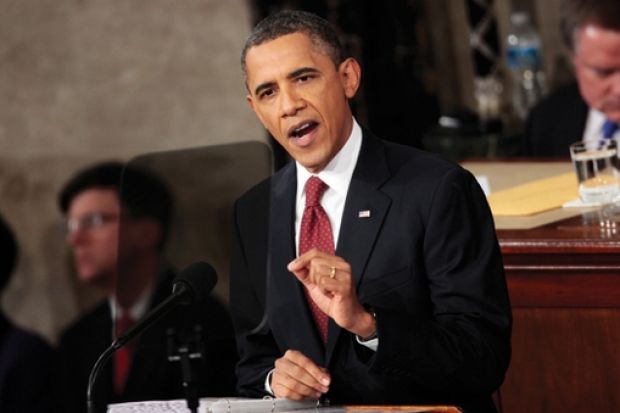Public universities in the US are suddenly finding themselves pressed to operate like almost every other institution in society: by getting paid for how well they do their jobs rather than how many seats they fill in classrooms.
The idea of tying money to performance comes not only from Barack Obama - who in his State of the Union address last month called for billions of dollars in federal aid to be held back from universities that raise their tuition fees too quickly - but also via the state level through direct control of public higher education budgets.
State politicians and policymakers have been racing to impose what is described as "performance funding", under which universities are given all or part of their budget allocations based on outcomes - graduation rates, for instance - and not solely on enrolments, as has previously been the case.
Some university administrators and faculty are unhappy about this trend of applying market principles to academia.
They warn that universities judged on their success rates may hesitate to risk admitting borderline applicants, no matter how much potential they have, or will lower standards to ensure that more students graduate more quickly.
"You're taking a university, which is a very complex enterprise, and you're attempting to boil it down into a few quantifiable metrics," said Thomas Harnisch, a policy analyst at the American Association of State Colleges and Universities. "To some, that might be objectionable."
But Mr Harnisch added that the momentum behind such ideas was unstoppable: "This is coming whether people like it or not."
Performance funding has been in vogue before, most notably in the mid-1990s when states were flush with cash and offered bonuses to universities to improve their graduation and retention rates, time to completion, job placements, contributions to the state economy and so on.
In all, 26 of the 50 US states have tried performance funding at one time or another, with 14 subsequently abandoning it.
Those that ditched the system did so because universities resisted the idea, funding for bonuses dried up again and the means available to measure progress were not entirely reliable, researchers from Teachers College at Columbia University found.
Doing more with less
Now the states are strapped for cash and performance funding is seen as a way of marshalling diminished resources more effectively.
One state, Indiana, has taken the unusual step of basing $150 million (£94 million) in budget cuts partly on performance, penalising campuses where per-student costs are high and completion rates low.
"States are trying to rationalise cutting funding for higher education by creating funding mechanisms and saying: 'See, we shouldn't be funding them fully because they aren't doing as well as they should,'" said Garrison Walters, executive director of higher education in South Carolina. There the state is rolling out a more nuanced plan for performance funding that takes into account each university's mission.
"If you believe that [this] will sharply drive tuition [fees] down, you have to believe that in the current system administrators are incompetent, don't know how to use technology and data, and that faculty are indifferent to effective teaching," Dr Walters added.
And that, he said, is just not true. "Pressure for efficiency has been on for a long time and people running universities are very capable."
Still, performance funding has worked in many of the states that have tried it in the past.
Universities in Tennessee responded to performance-funding requirements by adding student advisers, tutoring and remedial classes.
Pennsylvanian universities improved their retention and graduation rates and faculty productivity. And Ohio reduced the time it took students to earn bachelor's degrees.
"The idea that people didn't care about it before was nonsense," Dr Walters said. "But the whole conversation was helpful."
Other states that now use, are reviving or are in the process of adding performance funding include Arkansas, Colorado, Connecticut, Illinois, Louisiana, Missouri, North Dakota, Oregon, Washington and West Virginia.
The governor of Massachusetts has proposed bonuses of $7.5 million to his state's universities based on outcomes, and the governor of Texas wants 10 per cent of its substantial higher education budget to be tied to performance.
But Dr Walters said too many other factors come to bear on student success (including such intangibles as motivation) to put all the responsibility on to the universities without taking those elements into account.
"Getting more students through college with higher levels of learning is not just a worthy goal but an essential one," he said.
"But trashing the structure and management of American higher education as a way of making a point about costs damages the infrastructure that's intrinsic to the solution."
Register to continue
Why register?
- Registration is free and only takes a moment
- Once registered, you can read 3 articles a month
- Sign up for our newsletter
Subscribe
Or subscribe for unlimited access to:
- Unlimited access to news, views, insights & reviews
- Digital editions
- Digital access to THE’s university and college rankings analysis
Already registered or a current subscriber? Login
